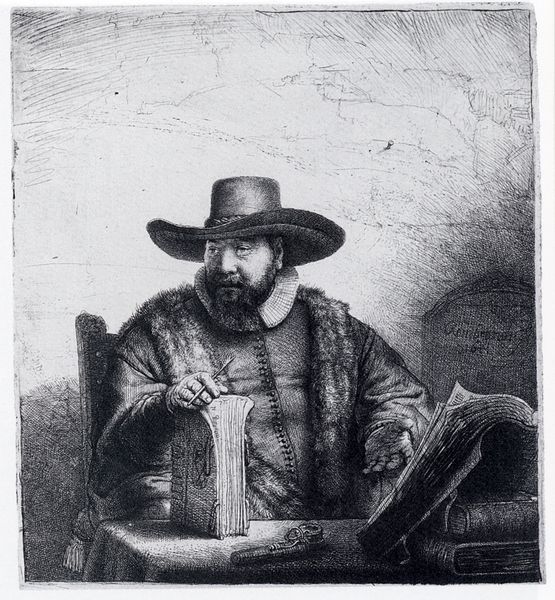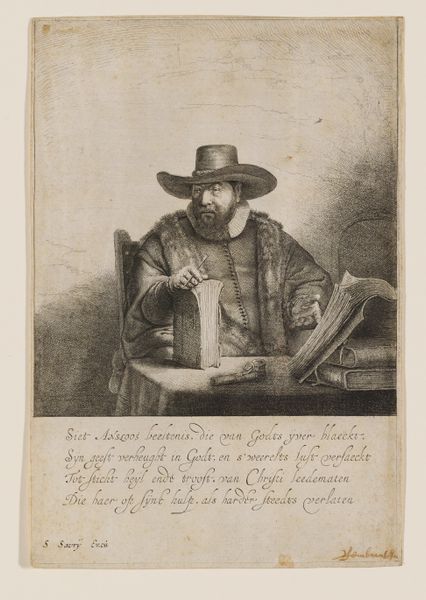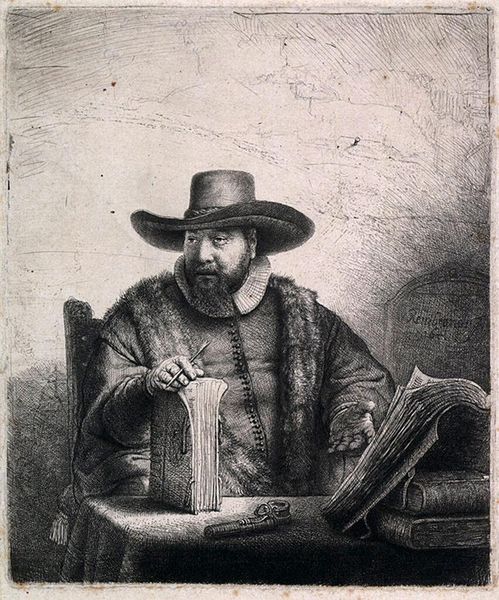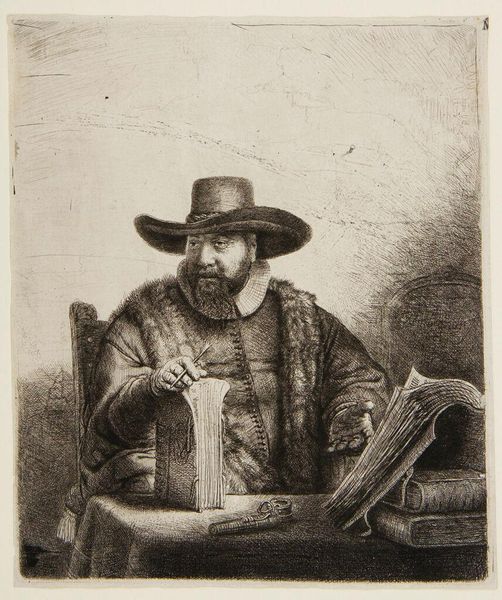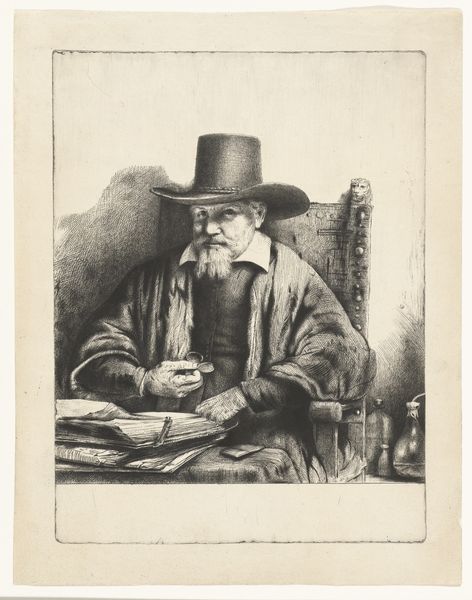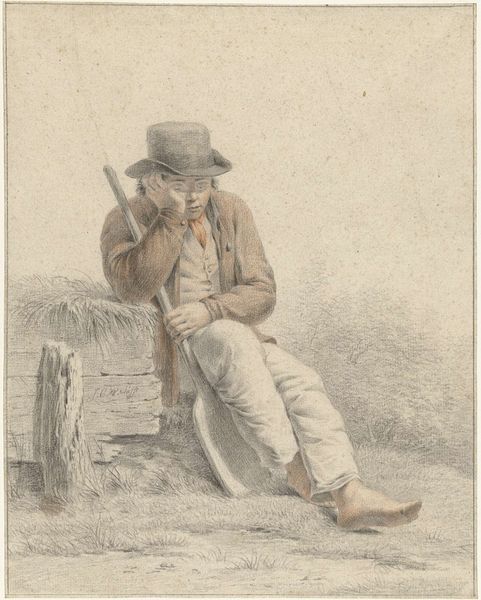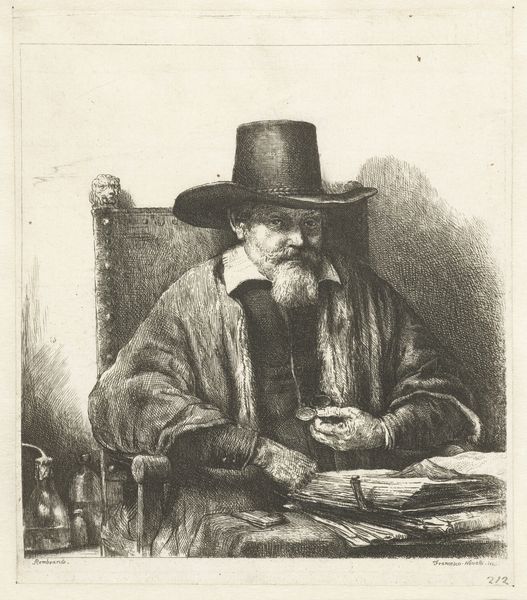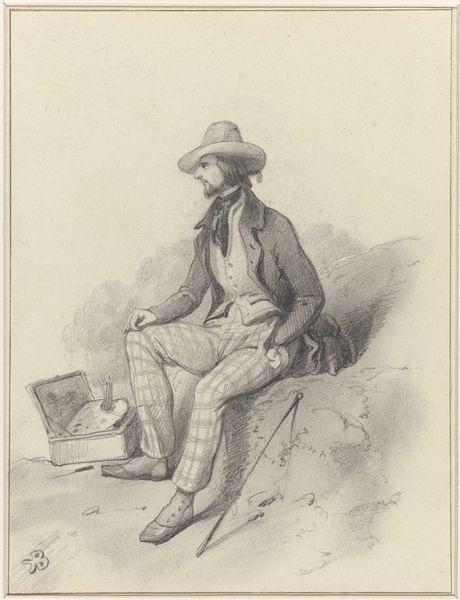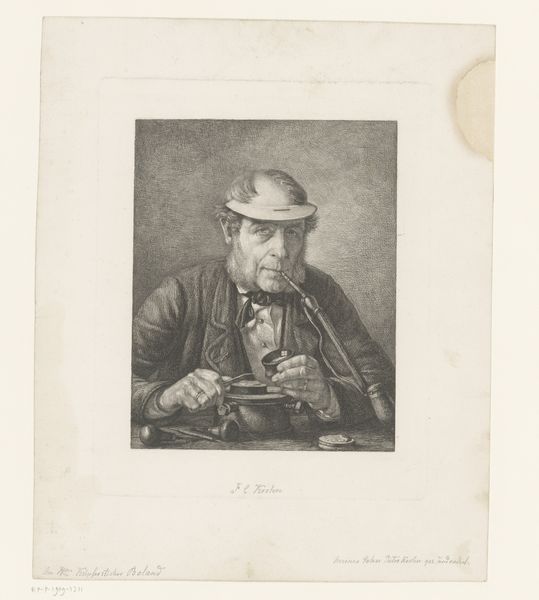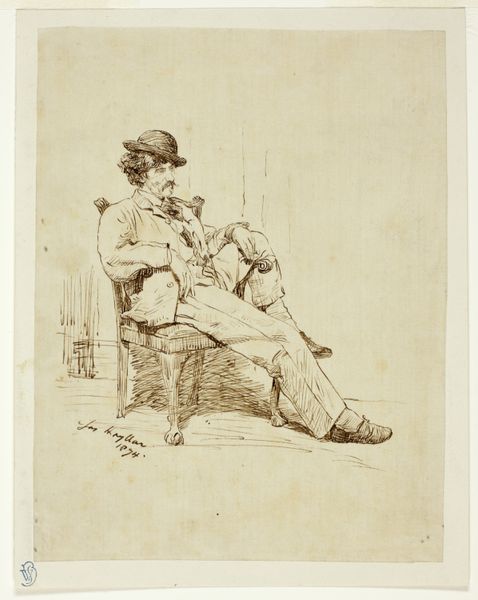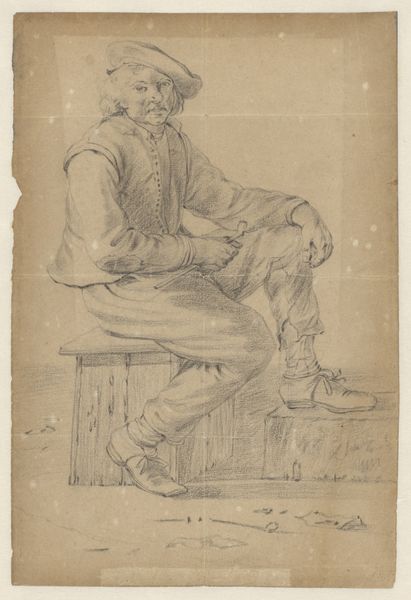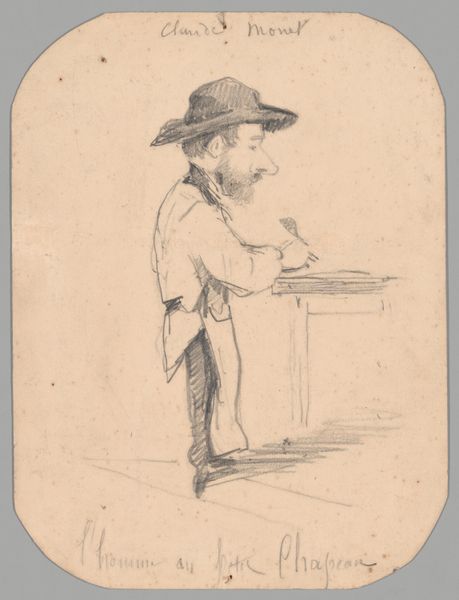
print, etching
#
portrait
#
baroque
#
dutch-golden-age
# print
#
etching
#
portrait reference
#
portrait drawing
#
portrait art
Copyright: National Gallery of Art: CC0 1.0
Editor: This is Rembrandt van Rijn’s "Cornelis Claesz Anslo," an etching from 1641. The detail is astonishing, especially in the rendering of fabrics. It feels quite intimate, like we’re intruding on a very private moment. What strikes you most about the formal qualities of this piece? Curator: The arresting quality of this etching arises, in my estimation, from the dynamic interplay between light and shadow. Notice the deliberate modulation of tones achieved through varied etching techniques; see how it articulates volume and texture. Furthermore, observe how the composition, employing a pyramidal structure, lends stability to the representation of a man in contemplation. Editor: I see what you mean. The light definitely directs the eye. Do you think the open book acts as some kind of structural support, echoing the man's upright posture and solidifying the composition? Curator: Indeed. The book acts not only as a structural element but also as a signifier within a semiotic system. Consider its open pages as a visual metaphor for the openness of knowledge, and the instrument held in Anslo's hand, mediating understanding, transforming information into a new construction of concepts. Editor: So, beyond just being a portrait, the arrangement of the forms—the books, the figure, even the light—they all point to this central theme of knowledge and interpretation? Curator: Precisely. Each line, shadow, and textural contrast functions as a component within a greater signifying structure, culminating in the depiction of intellectual engagement itself. Are there further elements of composition you find particularly intriguing? Editor: That's fascinating. Looking at the hat now, its circular form, in contrast with all those rectangular shapes, directs our gaze downwards into the scene. It feels like the circular motif is almost echoing and magnifying the whole intellectual activity, if that makes any sense. Curator: Your reading underscores the power of close visual analysis. Through careful examination of the structural elements and their interplay, one unravels the intricacies of the artist’s visual language. Editor: This close looking really changes how I see the piece. Thanks!
Comments
rijksmuseum about 2 years ago
⋮
Cornelis Anslo was a cloth merchant and preacher in Amsterdam. Rembrandt may have met him through Saskia’s cousin, Hendrick Uylenburgh, who was a member of Anslo’s congregation. Here he gestures with his left hand, as though speaking, which naturally refers to his function as a pastor. Rembrandt detailed his hat and clothing with utmost precision.
Join the conversation
Join millions of artists and users on Artera today and experience the ultimate creative platform.
